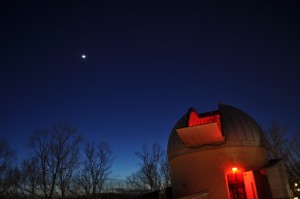
Talk at 7PM. Observing session from 7:30PM to 9:30PM. Please verify the event is still on at the website below before going!
Campus Map – The George Mason University Observatory at the Fairfax Campus building Research Hall formerly known as Research I.
March’s Full Moon is the “Lenten Moon”, “Worm Moon”, “Crow Moon”, “Crust Moon”, “Sugar Moon”, “Sap Moon”, “Chaste Moon”, or “Holi”.
The date (near March 21 in the northern hemisphere) when night and day are nearly the same length and Sun crosses the celestial equator (i.e., declination 0) moving northward. In the southern hemisphere, the vernal equinox corresponds to the center of the Sun crossing the celestial equator moving southward and occurs on the date of the northern autumnal equinox. The vernal equinox marks the first day of the season of spring.
http://scienceworld.wolfram.com/astronomy/VernalEquinox.html

Talk at 7:30PM. Observing session from 8:00PM to 10:00PM. Please verify the event is still on at the website below before going!
Campus Map – The George Mason University Observatory at the Fairfax Campus building Research Hall formerly known as Research I.
See front page of NOVAC Site for changes to event. More information about Great Meadow including directions and parking visit the Great Meadow Site page.

Talk at 7:30PM. Observing session from 8:00PM to 10:00PM. Please verify the event is still on at the website below before going!
Campus Map – The George Mason University Observatory at the Fairfax Campus building Research Hall formerly known as Research I.
Fantastic visibility for all of North America and much of South America. Maximum eclipse is at 7:46am UTC (2:46am central US time.)
Don’t miss this one!
http://en.wikipedia.org/wiki/April_2014_lunar_eclipse
April’s Full Moon is the “Egg Moon”, “Pink Moon”, “Sprouting Grass Moon”, “Fish Moon”, “Seed Moon”, “Waking Moon”, or “Hanuman Jayanti”.

